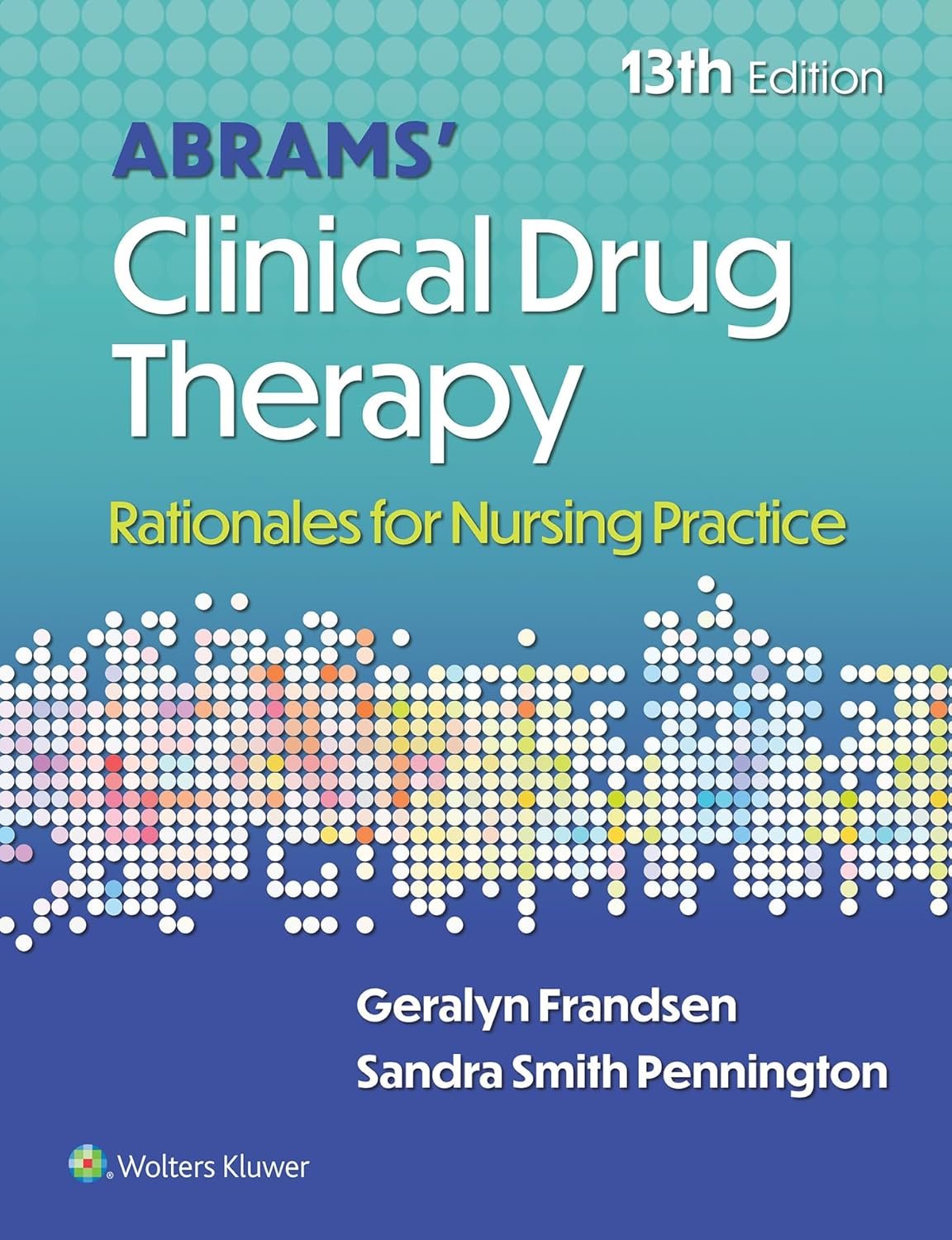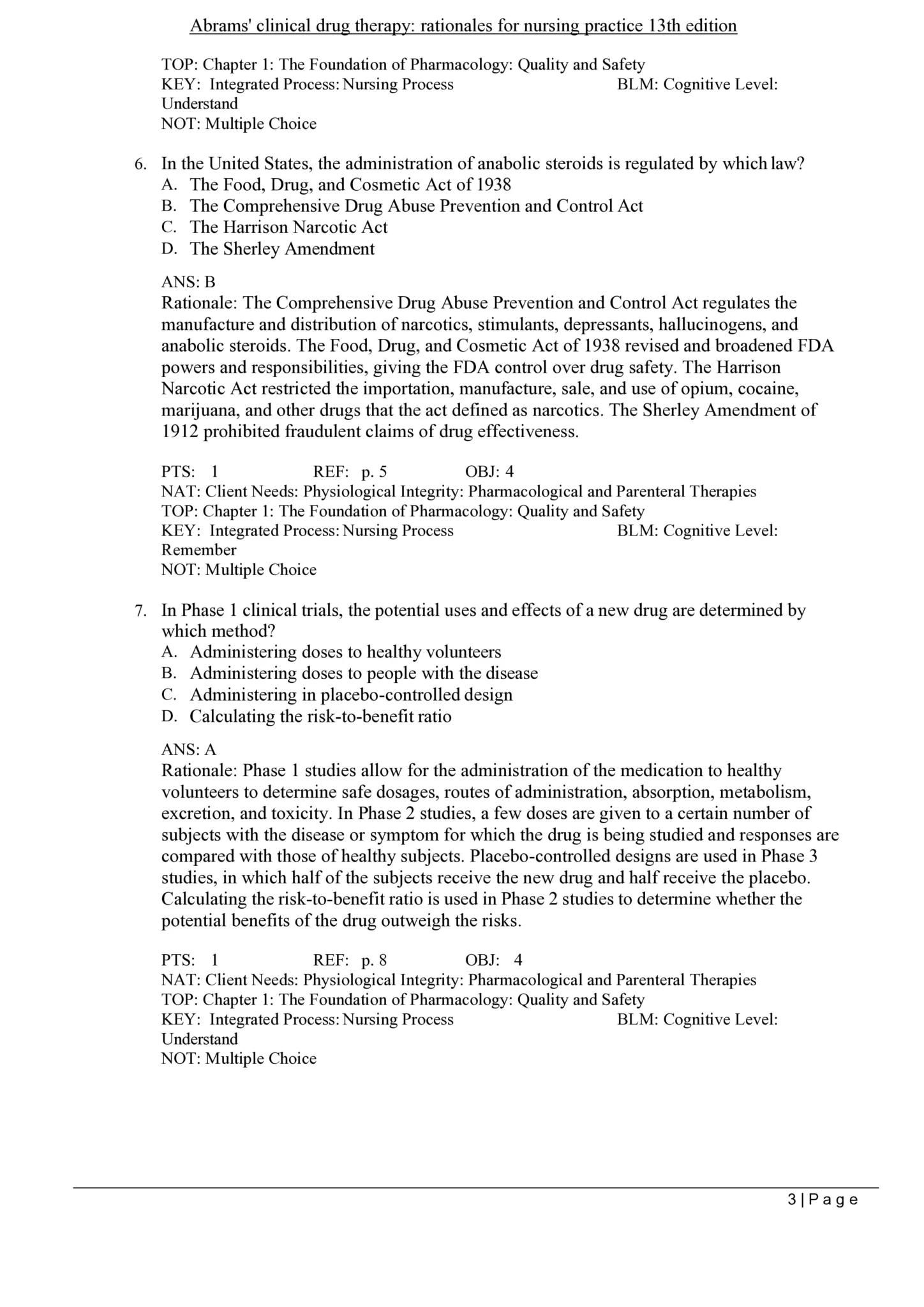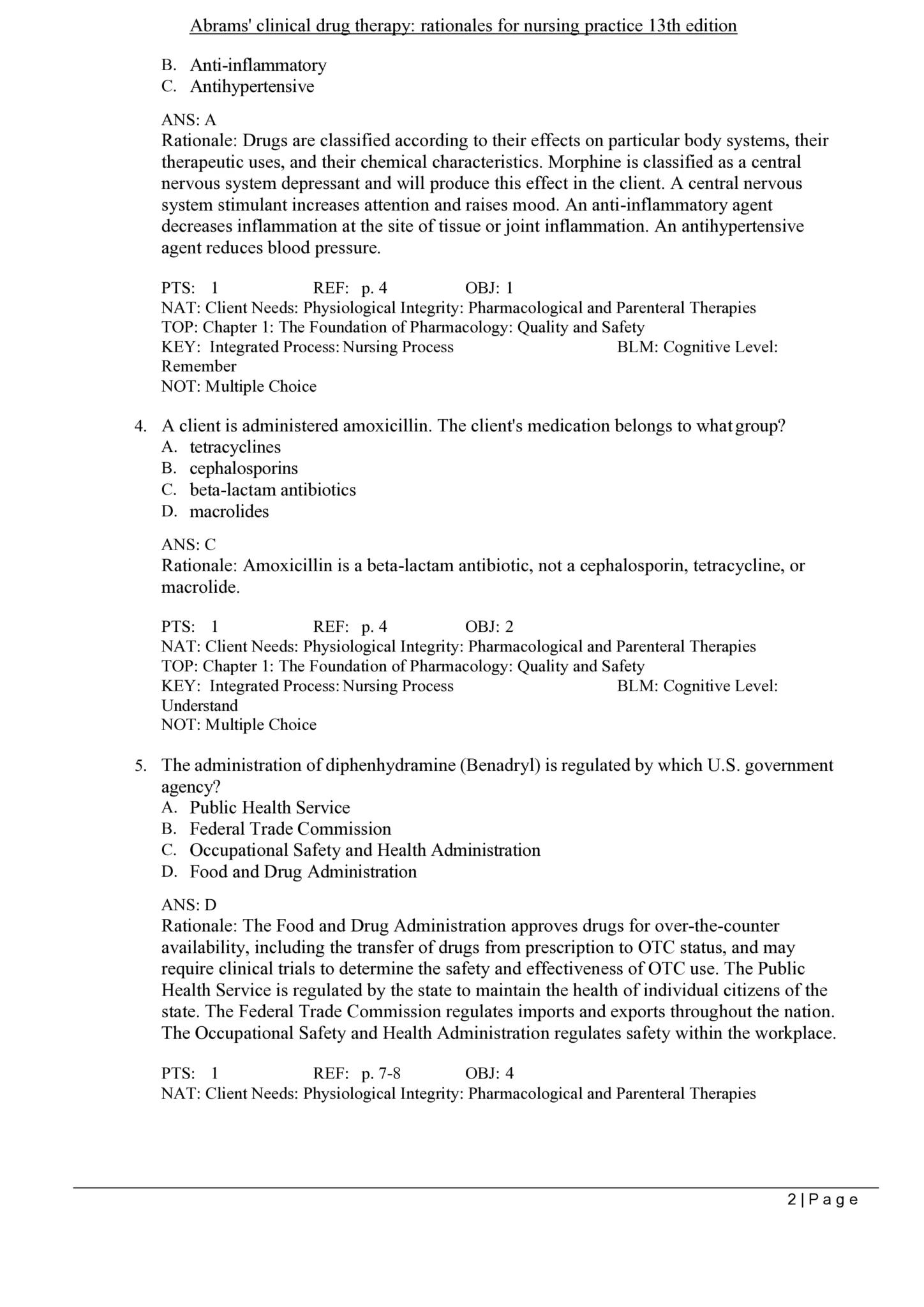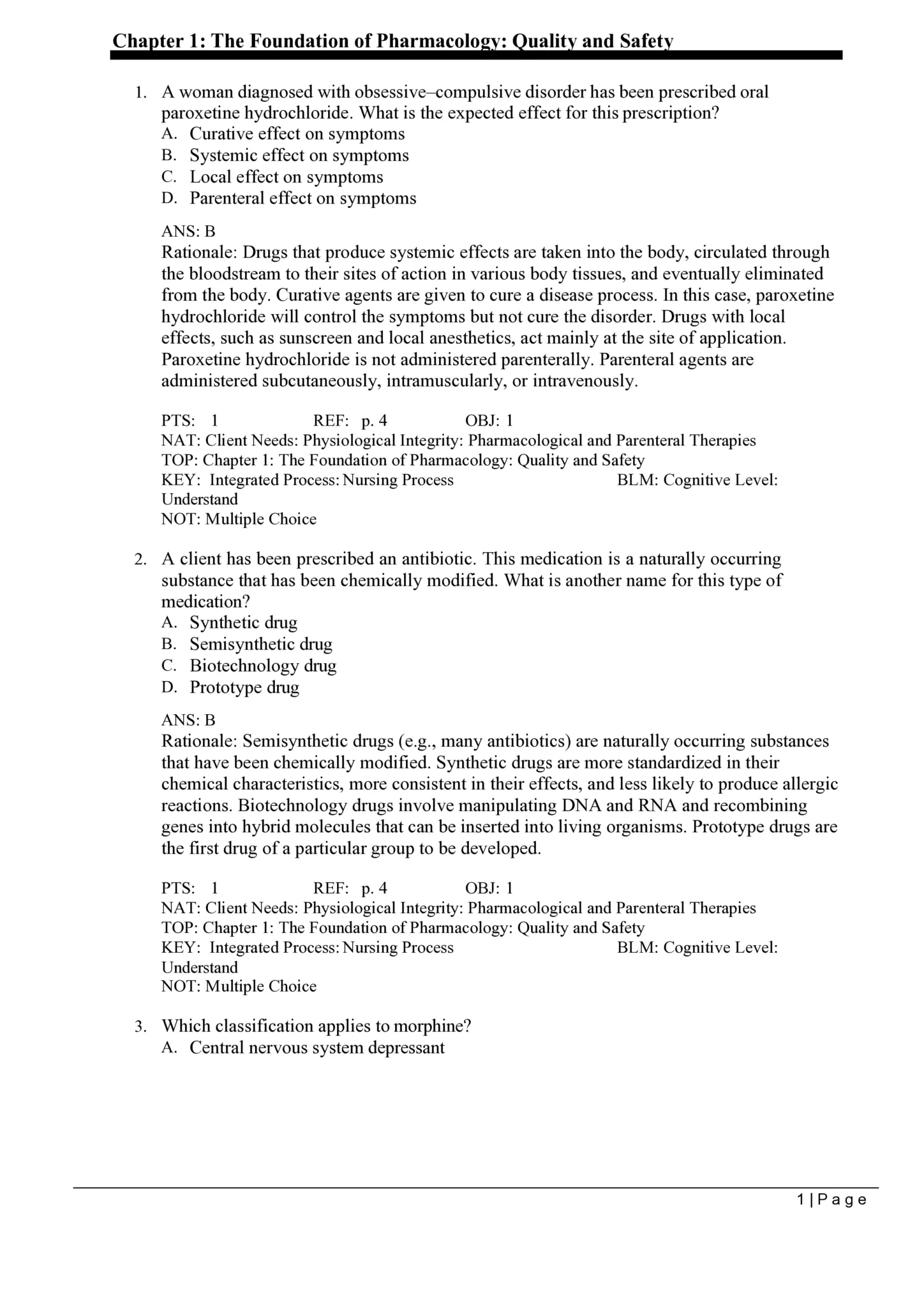Abrams’ Clinical Drug Therapy: Rationales for Nursing Practice, 13th Edition Test Bank
$26.00 Original price was: $26.00.$23.00Current price is: $23.00.
Prepare with confidence using the Abrams’ Clinical Drug Therapy: Rationales for Nursing Practice, 13th Edition Test Bank by Geralyn Frandsen and Sandra Smith Pennington. This instant PDF download features hundreds of NCLEX-style pharmacology questions with detailed rationales, organized by chapter. It’s an essential resource for nursing students mastering drug therapy concepts and preparing for class exams or the NCLEX.

Description
Instant PDF Download – The Abrams’ Clinical Drug Therapy: Rationales for Nursing Practice, 13th Edition Test Bank by Geralyn Frandsen and Sandra Smith Pennington is a complete study resource for nursing students preparing for pharmacology exams and the NCLEX. It contains hundreds of NCLEX-style questions with answers and rationales, organized by chapter for easy use.
Why Choose Abrams’ Clinical Drug Therapy Test Bank?
- NCLEX-style pharmacology questions: realistic exam practice with answer rationales.
- Organized by chapter: fully aligned with the 13th Edition textbook.
- Covers drug therapy concepts: safe administration, therapeutic effects, and nursing implications.
- Instant download: PDF available immediately after purchase, compatible with all devices.
Chapters Covered in Abrams’ Clinical Drug Therapy (13th Edition)
- Chapter 1: The Foundation of Pharmacology: Quality and Safety
- Chapter 2: Basic Concepts and Processes
- Chapter 3: Medication Administration and the Nursing Process of Drug Therapy
- Chapter 4: Pharmacology and the Care of Infants and Pediatric Patients
- Chapter 5: Pharmacology and the Care of Adults and Geriatric Patients
- Chapter 6: Pharmacology and the Care of Pregnant or Lactating Females
- Chapter 7: Pharmacology and Female Health
- Chapter 8: Pharmacology and Male Health
- Chapter 9: Drug Therapy for Coagulation Disorders
- Chapter 10: Drug Therapy for Dyslipidemia
- Chapter 11: Drug Therapy for Hematopoietic Disorders
- Chapter 12: Drug Therapy: Immunizations
- Chapter 13: Drug Therapy to Decrease Immunity
- Chapter 14: Drug Therapy for the Treatment of Cancer
- Chapter 15: Inflammation, Infection, and the Use of Antibacterial Agents
- Chapter 16: Drug Therapy to Decrease Pain, Fever, and Inflammation
- Chapter 17: Drug Therapy with Corticosteroids
- Chapter 18: Drug Therapy With Beta-Lactam Antibacterial Agents
- Chapter 19: Drug Therapy With Aminoglycosides and Fluoroquinolones
- Chapter 20: Drug Therapy With Tetracyclines, Sulfonamides, and Urinary Antiseptics
- Chapter 21: Drug Therapy With Macrolides and Miscellaneous Anti-Infective Agents
- Chapter 22: Drug Therapy for Tuberculosis and Mycobacterium avium Complex Disease
- Chapter 23: Drug Therapy for Viral Infections
- Chapter 24: Drug Therapy for Fungal Infections
- Chapter 25: Drug Therapy for Parasitic Infections
- Chapter 26: Drug Therapy for Hypertension
- Chapter 27: Drug Therapy for Dysrhythmias
- Chapter 28: Drug Therapy for Coronary Heart Disease
- Chapter 29: Drug Therapy for Shock and Hypotension
- Chapter 30: Drug Therapy for Heart Failure
- Chapter 31: Drug Therapy for Nasal Congestion and Cough
- Chapter 32: Drug Therapy to Decrease Histamine Effects and Allergic Response
- Chapter 33: Drug Therapy for Asthma, Airway Inflammation, and Bronchoconstriction
- Chapter 34: Drug Therapy for Fluid Volume Excess
- Chapter 35: Nutritional Support Products, Vitamins, and Mineral Supplements
- Chapter 36: Drug Therapy for Weight Management
- Chapter 37: Drug Therapy for Peptic Ulcer Disease and Hyperacidity
- Chapter 38: Drug Therapy for Nausea and Vomiting
- Chapter 39: Drug Therapy for Constipation and Elimination Problems
- Chapter 40: Drug Therapy for Diarrhea
- Chapter 41: Drug Therapy for Diabetes Mellitus
- Chapter 42: Drug Therapy for Hyperthyroidism and Hypothyroidism
- Chapter 43: Drug Therapy for Pituitary and Hypothalamic Dysfunction
- Chapter 44: Drug Therapy to Regulate Calcium and Bone Metabolism
- Chapter 45: Drug Therapy for Adrenal Cortex Disorders
- Chapter 46: Physiology of the Autonomic and Central Nervous Systems and Indications for Drug Therapy
- Chapter 47: Drug Therapy for Myasthenia Gravis, Alzheimer Disease, and Urinary Retention
- Chapter 48: Drug Therapy for Parkinson Disease, Urinary Spasticity, and Disorders Requiring Anticholinergic Therapy
- Chapter 49: Drug Therapy With Opioids
- Chapter 50: Drug Therapy With Local Anesthetics
- Chapter 51: Drug Therapy With General Anesthetics
- Chapter 52: Drug Therapy for Migraines and other Headaches
- Chapter 53: Drug Therapy for Seizure Disorders and Skeletal Muscle Relaxants
- Chapter 54: Drug Therapy for Anxiety and Insomnia
- Chapter 55: Antidepressants and Mood Stabilizers
- Chapter 56: Drug Therapy for Psychotic Disorders
- Chapter 57: Drug Therapy for ADHD and Narcolepsy
- Chapter 58: Drug Therapy for Substance Use Disorders
- Chapter 59: Drug Therapy for Disorders of the Eye
- Chapter 60: Drug Therapy for Disorders of the Ear
- Chapter 61: Drug Therapy for Disorders of the Skin
Sample Questions from Abrams’ Clinical Drug Therapy Test Bank
1. A woman diagnosed with obsessive–compulsive disorder has been prescribed oral paroxetine hydrochloride. What is the expected effect for this prescription?
A. Curative effect on symptoms
B. Systemic effect on symptoms
C. Local effect on symptoms
D. Parenteral effect on symptoms
ANS: B
Rationale: Drugs that produce systemic effects are taken into the body, circulated through the bloodstream to their sites of action in various body tissues, and eventually eliminated from the body. Curative agents are given to cure a disease process. In this case, paroxetine
hydrochloride will control the symptoms but not cure the disorder. Drugs with local effects act mainly at the site of application. Paroxetine hydrochloride is not administered parenterally.
PTS: 1 REF: p. 4 OBJ: 1
NAT: Client Needs: Physiological Integrity: Pharmacological and Parenteral Therapies
TOP: Chapter 1: The Foundation of Pharmacology: Quality and Safety
KEY: Integrated Process: Nursing Process BLM: Cognitive Level: Understand
NOT: Multiple Choice
2. A client has been prescribed an antibiotic. This medication is a naturally occurring substance that has been chemically modified. What is another name for this type of
medication?
A. Synthetic drug
B. Semisynthetic drug
C. Biotechnology drug
D. Prototype drug
ANS: B
Rationale: Semisynthetic drugs (e.g., many antibiotics) are naturally occurring substances that have been chemically modified. Synthetic drugs are standardized in characteristics, biotechnology drugs involve genetic manipulation, and prototype drugs are the first of a class.
PTS: 1 REF: p. 4 OBJ: 1
NAT: Client Needs: Physiological Integrity: Pharmacological and Parenteral Therapies
TOP: Chapter 1: The Foundation of Pharmacology: Quality and Safety
KEY: Integrated Process: Nursing Process BLM: Cognitive Level: Understand
NOT: Multiple Choice
3. Which classification applies to morphine?
A. Central nervous system depressant
B. Anti-inflammatory
C. Antihypertensive
ANS: A
Rationale: Drugs are classified according to their effects on body systems, therapeutic uses, and chemical characteristics. Morphine is a central nervous system depressant. Anti-inflammatory drugs reduce inflammation, and antihypertensives lower blood
pressure.
PTS: 1 REF: p. 4 OBJ: 1
NAT: Client Needs: Physiological Integrity: Pharmacological and Parenteral Therapies
TOP: Chapter 1: The Foundation of Pharmacology: Quality and Safety
KEY: Integrated Process: Nursing Process BLM: Cognitive Level: Remember
NOT: Multiple Choice
Frequently Asked Questions
What is included in the Abrams’ Clinical Drug Therapy 13th Edition Test Bank?
It includes hundreds of NCLEX-style pharmacology questions across all chapters, each with detailed answers and rationales.
Is this test bank useful for NCLEX preparation?
Yes. The questions reflect NCLEX pharmacology style and focus on safe drug administration, therapeutic effects, and nursing care.
Who authored the textbook this test bank supports?
This test bank supports Abrams’ Clinical Drug Therapy: Rationales for Nursing Practice, 13th Edition by Geralyn Frandsen and Sandra Smith Pennington.
How do I access the file after purchase?
You will receive instant digital access to the PDF immediately after purchase—no shipping required.
Are answers and rationales included?
Yes. Every question comes with the correct answer and rationale to support exam preparation and learning.
Instant Digital Access
Study anywhere, anytime. This test bank is delivered as a PDF, instantly downloadable and compatible with computers, tablets, and smartphones. Begin preparing for exams today.
Related products
-
Sale!
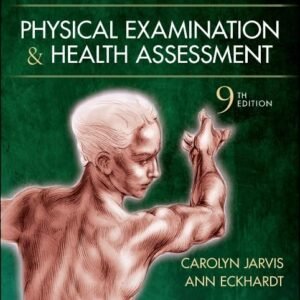
Test bank for Physical Examination and Health Assessment, 9th Edition
$26.00Original price was: $26.00.$23.00Current price is: $23.00. Add to cart -
Sale!
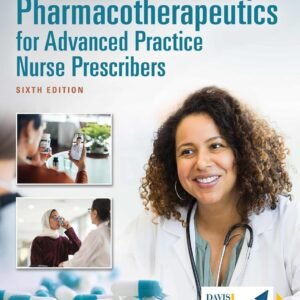
Pharmacotherapeutics for Advanced Practice Nurse Prescribers, 6th Edition Test Bank PDF
$26.00Original price was: $26.00.$23.00Current price is: $23.00. Add to cart -
Sale!

Test Bank for Davis Advantage for Maternal-Child Nursing Care, 3rd Edition
$26.00Original price was: $26.00.$23.00Current price is: $23.00. Add to cart -
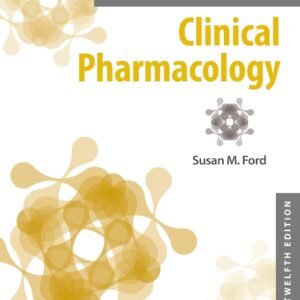
Test bank for Introductory Clinical Pharmacology 12th Edition by Susan M Ford
$23.00 Add to cart

